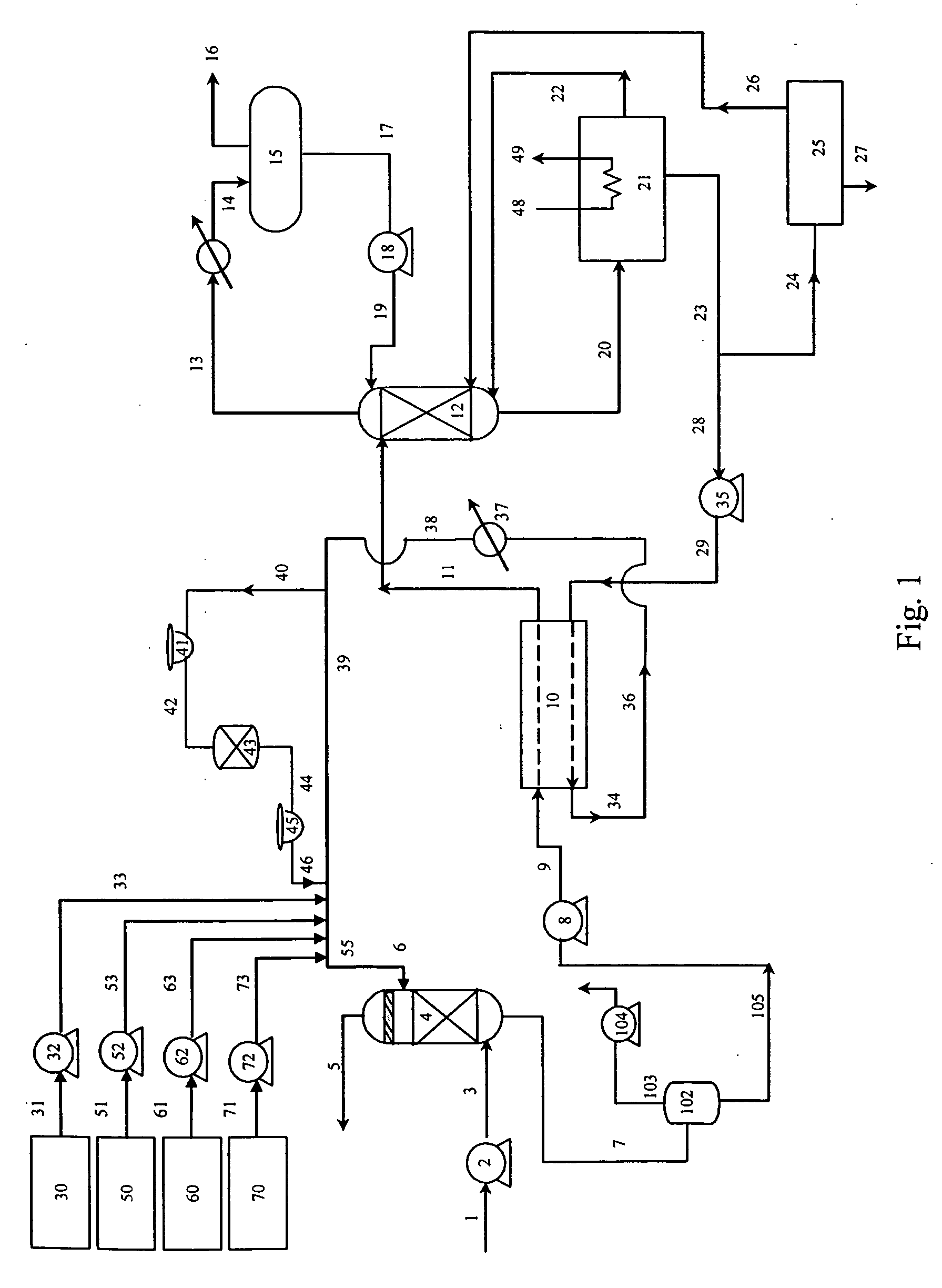Carbon dioxide recovery from flue gas and the like
a technology of flue gas and carbon dioxide, applied in the field of carbon dioxide recovery, can solve the problems of high transportation cost, high waste, and accounting for nearly 75% of the operating cos
- Summary
- Abstract
- Description
- Claims
- Application Information
AI Technical Summary
Benefits of technology
Problems solved by technology
Method used
Image
Examples
Embodiment Construction
[0020] Referring to the Figure, feed gas mixture 1, which typically has been cooled and treated for the reduction of particulates and other impurities such as sulfur oxides (SOx) and nitrogen oxides (NOx), is passed to compressor or blower 2 wherein it is compressed to a pressure generally within the range of from 14.7 to 30 pounds per square inch absolute (psia). Feed gas mixture 1 generally contains from 2 to 50 mole percent carbon dioxide as the absorbate, and typically has a carbon dioxide concentration within the range of from 3 to 25 mole percent. Feed gas mixture 1 also contains oxygen in a concentration generally within the range of from less than 1 to about 18 mole percent. Feed gas mixture 1 may also contain one or more other components such as trace hydrocarbons, nitrogen, carbon monoxide, water vapor, sulfur oxides, nitrogen oxides and particulates. A preferred feed gas mixture is flue gas, by which is meant gas obtained upon the complete or partial combustion of hydroca...
PUM
| Property | Measurement | Unit |
|---|---|---|
| temperature | aaaaa | aaaaa |
| temperature | aaaaa | aaaaa |
| temperatures | aaaaa | aaaaa |
Abstract
Description
Claims
Application Information
 Login to View More
Login to View More - R&D
- Intellectual Property
- Life Sciences
- Materials
- Tech Scout
- Unparalleled Data Quality
- Higher Quality Content
- 60% Fewer Hallucinations
Browse by: Latest US Patents, China's latest patents, Technical Efficacy Thesaurus, Application Domain, Technology Topic, Popular Technical Reports.
© 2025 PatSnap. All rights reserved.Legal|Privacy policy|Modern Slavery Act Transparency Statement|Sitemap|About US| Contact US: help@patsnap.com

